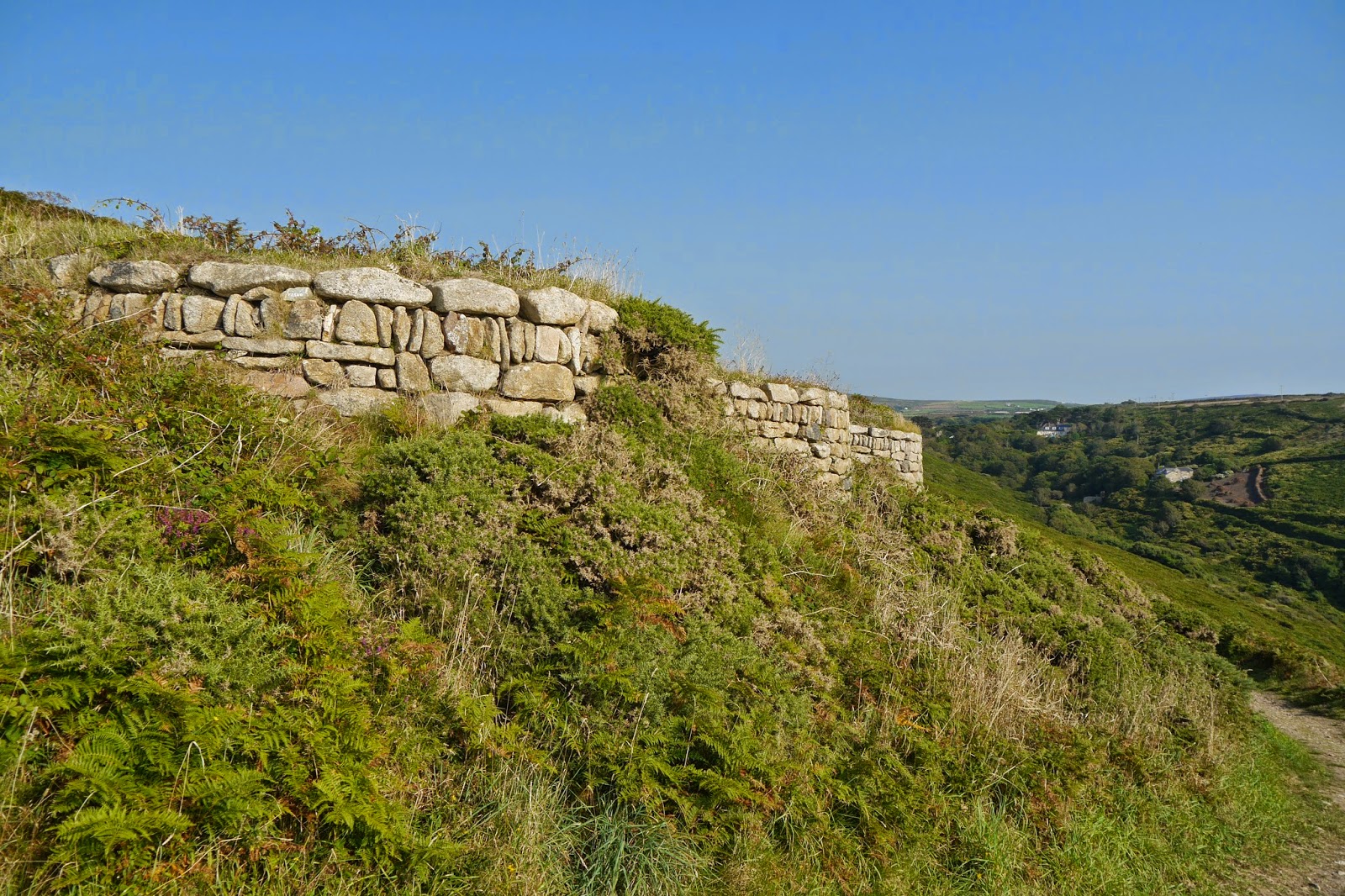Sunday, 7 September 2014
63 Sennen Cove to Cape Cornwall
After yesterday's most enjoyable interlude in Topsham, we resume the Coast Path at Sennen, looking along the fine expanse of golden sand.
We climb away from the back of the beach and soon have a view along the coast to today's destination - Cape Cornwall.
The end of Whitesand Bay, Aire Point, is notably rocky as we pass beneath it.
Round the corner we come on a new landscape of rocky, sloping cliffs covered in broom and two types of heather. I am thrilled to have three separate sightings of the elusive Clouded Yellow, a non-native butterfly which is however a fairly frequent migrant to southern England.
The next section is similar, but for this beach of round white stones.
Turning the headland of Maen Dower we get a surprise. There is a sudden mass of sandstone: Gribbin Point.
Beyond this, the path zig zags down towards sea level and then arrives at Nanven. A car park means that there are suddenly more people about, sunning themselves on rocks. We are forced inland along the Cot Valley. Looking back, there is a fine view out to sea where the rocks known as The Brisons fill the V of the cliffs.
After heading inland, we climb to the top of the cliff and head back toward the sea. A series of former mine shafts have an air of medieval fortifications.
After another half mile we are at last at Cape Cornwall, apparently the only cape in England. The apparent tower is in fact an old mine chimney. The Brisons are again offshore.
What then is a Cape? A bit of Googling produces definitions along the lines of a piece of land projecting into the sea, with the origin being the Latin word for a head. The Wikipedia entry for Cape Cornwall says that a cape is the point of land where two bodies of water meet, which seems a bit more specific.
So what about Cape Cornwall? According to the Cornwall Calling website, the two bodies of water are the English Channel and St Georges Channel. However, St George's Channel is generally understood to run between Ireland and Wales, connecting the Celtic and Irish Seas. I am going to go for the English Channel and the Atlantic.
Interestingly, Wikipedia adds that until the first Ordnance Survey, 200 years ago, it was thought that Cape Cornwall was the most westerly point in Cornwall.
Conditions: warm and sunny.
Distance: 5 miles (distance now covered 379.3 miles.
Map: Explorer 102 (Land's End).
Grading: Moderate.
Rating: four stars.
Labels:
West Cornwall
Subscribe to:
Post Comments (Atom)








No comments:
Post a Comment